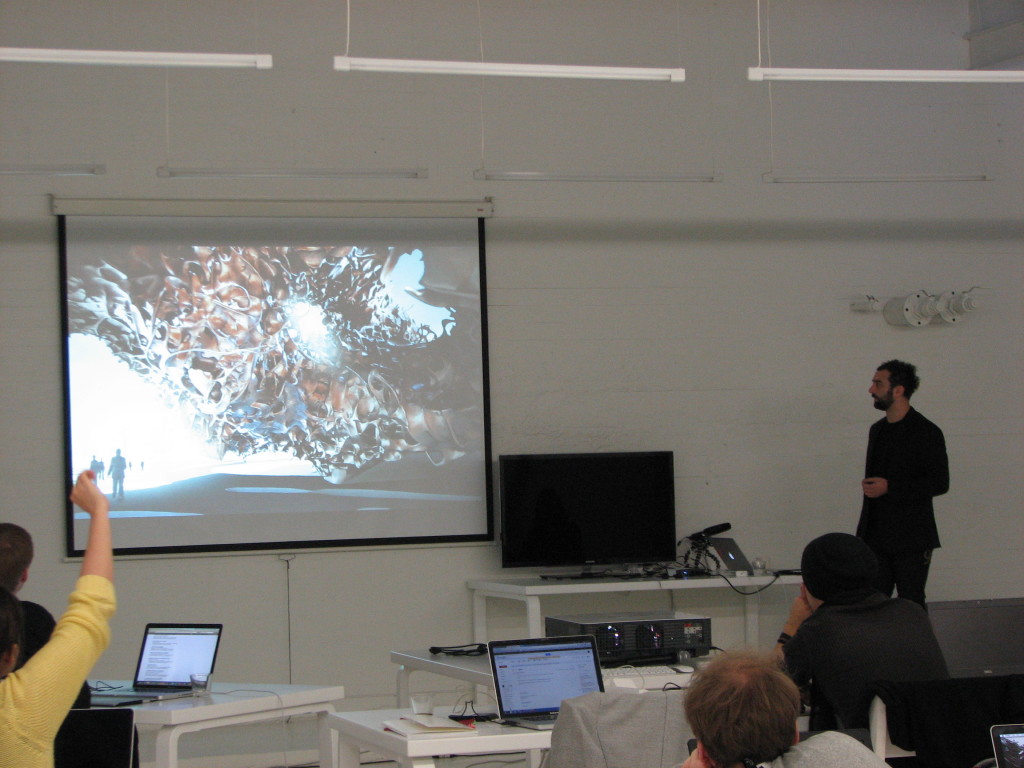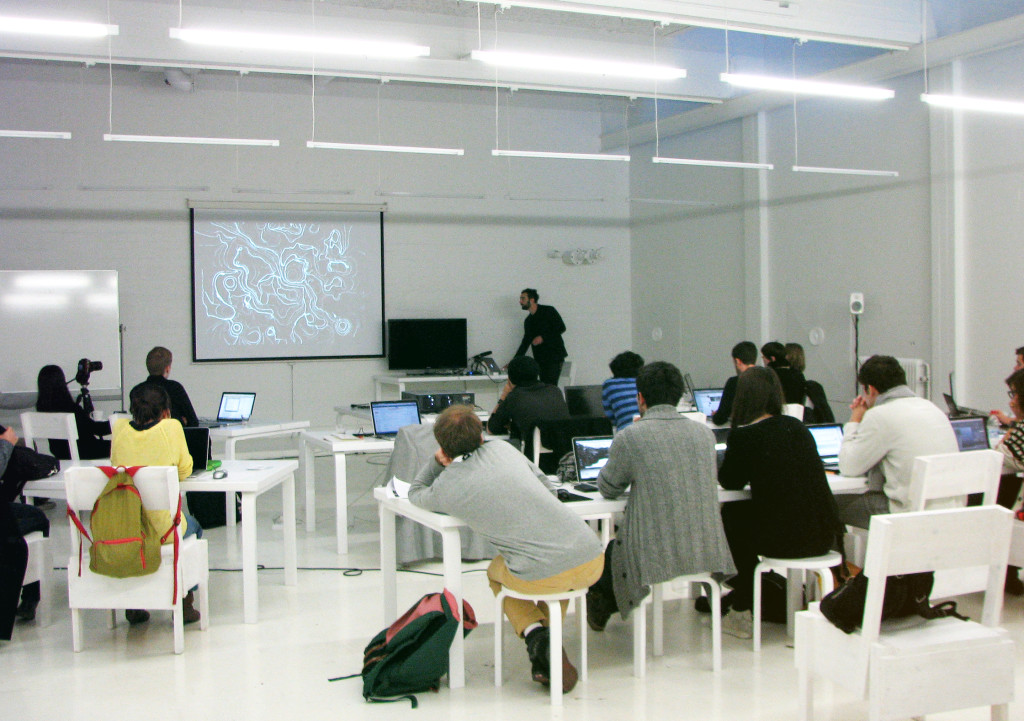RB Dress / 2010
RB Dress is designed and made specifically for WEAR IS ART, Berlin
For WEAR IS ART, I am pleased to present a dress made entirely from rubber bands (4kg , approximately 14 325 different colors and sizes of rubber bands).
PAUL KLEE COLOR
My submission is inspired by Paul Klee and Bauhaus.
“Color possesses me. I don’t have to pursue it. It will possess me always, I know it.” Paul Klee
In a way I can associate with Paul Klee in the way that I see the surrounding world. Raised in a family with mother-sculptor and father-painter, I have always been intrigued by different art forms.
Shapes, volumes and colors fascinate me, and quite often I am also looking for similar expression in the architectural projects that I am working on.
Two of Klee’s pictures that inspired my RB Dress are The Black Prince and The Golden Fish.
Being a practiced architect I always had an interest in Klee’s work, not only for the colors that he uses, but also for his more analytic approach, and geometrical shapes.
In my submission I was looking to grasp the spirit of Paul Klee’s work. I was intrigued by the pastel colors used together with the black, darker ones; the black outlines and texture-like “fabric”
of his works. For me also of utmost importance is Paul Klee’s Color Theory which he developed and taught to Bauhaus students.
LINE, DRAWING, ARROWS
“A drawing is simply a line going for a walk.” Paul Klee
Being an architect lines and arrows, all of these drawing elements, are very important for my way of thinking. They are intricately weaved in the fabric of the drawings and respectfully –
architectural plans. When designing the dress I intentionally created the skirt to resemble a stack of lines – black and colored. Quite a significant number of the strings finished with a bunch
of black rubber bands, which were my interpretations of arrows. They also expressed direction and movement which are part of the ideas behind Bauhaus..
BAUHAUS
For me the Bauhaus is the most influential design and theoretical movement, which laid the foundation for my understanding and practicing of art and architecture.
The Bauhaus was founded with the idea of creating a ‘total’ work of art in which all arts, including architecture would eventually be brought together, and exactly this approach inspired my creative
process. Drawings, lines, colors, texture, architecture, structure, dance, textile all are interweaved together, and with RB Dress which I am submitting to Wear Is Art I am trying to recreate the Bauhaus’ spirit using contemporary materials.
STRUCTURE, STANDARTIZATION, GEOMETRY, LOGYC
Creating the RB Dress I was inspired by the colors and the Color Theory of Paul Klee, but also for me the Bauhaus was as much important with the understanding that the style promotes towards,
systems, standards, geometry, mathematics. In this way it was not surprising that I was able to calculate the quantity of rubber bands used in the making of the dress. Even I found joy and fun doing that. For example:
Every string of the skirt is made from 10 black rubber bands that continued with 10 colored rubber bands. At the end of the colored ones, there are small arrow-liked finishes, which are made from 2
groups of 5 small rubber bands connected with 2 additional ones….. So at the end I was able to estimate that about 14 325 different colors and sizes of rubber bands were used in the creating of the garment. The dress is entirely hand weaved.
Also in the designing of the RB Dress I was interested in making colored shapes that are actually geometrical ones – like purple rhombus and circles, yellow triangles, green square and
rectangular shapes, red and blue spheres, colored lines, black lines…. There is a very strong structure, pattern and math behind the colorful palette of the dress.
TEXTILE
One of the main objectives of the Bauhaus was to unify art, craft, and technology. One piece of the new belief in the School was that no type of art or design was inferior to any other. They should all be seen as having their potential part to play in a total work of art. When the Bauhaus set up its textile workshop, no less a painter than Paul Klee specially created designs to be woven. He was a teacher in the department as well.
This is another part of the join inspiration that I found in the Bauhaus and Paul Klee, When making the pictures for the submission I was intentionally looking for a space that could enhance the spirit of the design. Please note that our firm – Milev Architects, PLLC with Vesselin Milev and myself being the architects behind the project, designed the Textile Arts Center. When physically I was making the dress I used techniques embodied in the textile work.
MATERIALS
“Art does not reproduce the visible; rather, it makes visible.” Paul Klee During the years when the Bauhaus was functioning, 1919-1933, wool, cotton, silk and linen was the most frequently materials used in the textile. But the Bauhaus students, true to the believes of the school, challenged the traditions and started experiment with new and unusual materials like cellophane, glass sand even aluminum. Trying to follow the principals of the Bauhaus I am experimenting with new materials in order to defy and reinvent tradition. I am reusing, upcycling and re-purposing ordinary office supply materials like rubber bands.














